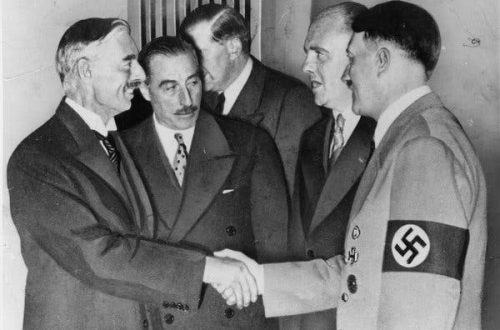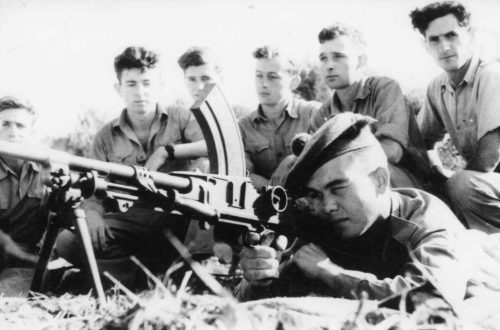Seventy years ago this month, large parts of London and other British cities were being pounded into rubble by German bombers.
Here’s part of an entry from the wartime diary of George Orwell, who was living in London at the time (and probably indulging in some wishful thinking):
Heavy bombing in this area last night till about 11 p.m…….
…..
There has of course been a big exodus from the East End, and every night what amount to mass migrations to places where there is sufficient shelter accommodation. The practice of taking a 2d ticket and spending the night in one of the deep Tube stations, e.g. Piccadilly, is growing . . . . . . Everyone I have talked to agrees that the empty furnished houses in the West End should be used for the homeless; but I suppose the rich swine still have enough pull to prevent this from happening. The other day 50 people from the East End, headed by some of the Borough Councillors, marched into the Savoy and demanded to use the air-raid shelter. The management didn’t succeed in ejecting them till the raid was over, when they went voluntarily. When you see how the wealthy are still behaving, in what is manifestly developing into a revolutionary war, you think of St. Petersburg in 1916.
And this is from an historical account by James Richards at the BBC website:
[T]he ‘Myth of the Blitz’ is just that – a myth. As members of the establishment were able to take refuge in country houses, in comfort and out of the way of the bombs, or in expensive basement clubs in the city, the lower-middle and working classes were forced to stay in the cities and face up to the deadly raids with inadequate provision for shelter.
It was a time of terror, confusion and anger. Government incompetence – almost criminal in its extent – displayed what was almost a contempt for ordinary people. It was time for the people to help themselves to the shelter they needed. It was a time of class war.
…..
At first no one in authority seemed concerned about the people of Britain’s towns who, unlike the upper classes, could not leave their homes and find shelter in the country. Hitler had provided large, sanitary and comfortable indestructible shelters for his people, but in this country it was a different story.
…..
The government expressed concern that a deep shelter system might create a ‘deep shelter mentality’: the fear that hordes of people might descend into the bowels of the earth and never come out, rendering them useless to the war effort and hampering war production. Unfortunately, the shelter that the government actually provided for the people was a lot more meagre.
…..
In its attempts to cover up low morale, the government made what has come to be seen as a huge mistake. They tried to show that life in London was carrying on as normal, and there was much coverage in the press of people going to parties, dining out and clubbing in the West End. This propaganda certainly backfired in London. The majority of the population, particularly in the East End, were not dining and partying in reinforced basement clubs. For them, shelter was either completely non-existent, or extremely poor.In response, on the evening of 15 September 1940, about 100 people burst into the Savoy Hotel, on the Thames Embankment, demanding shelter. During the confusion the air raid alert sounded, and the manager realised that he could not send the invaders out into danger. The police were called for advice, but before the manager had to decide where to put his unwelcome East Enders, the ‘all clear’ sounded, and the interlopers retreated. They had made their point for specially designed, comfortable and safe shelter. They were sure that officialdom would now take notice of their concerns.
In late 1940, the tubes began to show their weakness, especially when bombs fell directly on Balham and Bounds Green underground stations. In early 1941, 50 people were killed when a bomb blasted through a ticket hall at Bank station. Perhaps after all it was not the tubes that were going to be the most successful solution, but another scheme championed by the people of the East End – the astonishing shelter known as Mickey’s Shelter.
Mickey’s was a notorious example of people finding shelter for themselves. It was in the massive vaults beneath the Fruit and Wool exchange in Brushfield St, and it was taken over early in the war as a shelter for 5,000 people. However, on the first night it was opened, twice that number of people crammed in to a space that quickly became the black hole of London. By 7.30pm every bit of floor space was taken up. The floor was awash with urine. People slept on piles of rubbish, and the passages were loaded with filth. The lights were dim or non-existent. There was no room to move.
Out of this chaos, there came a system of rules to make it more bearable. When the shelter was finally recognised by the authorities, toilets were installed. All of this was thanks to Mickey, a 3ft-tall hunchback optician, who had established a shelter committee that went on to elect its own leaders. Mickey’s shelter was the people’s success – regulated, but not as regulated as the tube system. Here some 10,000 people slept under the same roof, resulting in nightly scenes of fighting, sex, music and laughter.


